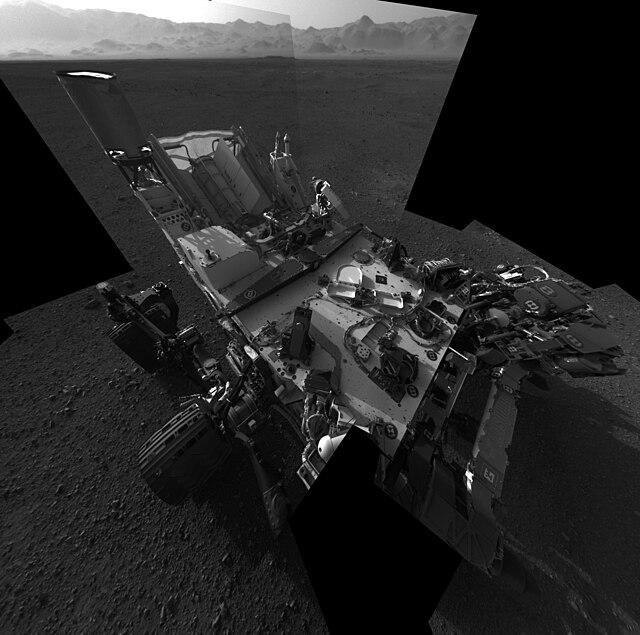Top Qs
Timeline
Chat
Perspective
Navcam
From Wikipedia, the free encyclopedia
Remove ads
Navcam, short for navigational camera, is a type of camera found on certain robotic rovers or spacecraft used for navigation without interfering with scientific instruments.[1][2][3] Navcams typically take wide angle photographs that are used to plan the next moves of the vehicle[4] or object tracking.[1]

Overview
The Mars Curiosity rover has two pairs of black and white navigation cameras mounted on the mast to support ground navigation. The cameras have a 45 degree angle of view and use visible light to capture stereoscopic 3-D imagery.[5] These cameras, like those on the Mars Pathfinder missions support use of the ICER image compression format[citation needed].
European Space Agency Rosetta spacecraft used a single camera with 5 degree field of view and 12 bit 1024x1024px resolution allowing for visual tracking on each of spacecraft approaches to the asteroids and finally the comet.[1]
Remove ads
Gallery
- Curiosity rover's mast with two navcams
- Mars Exploration Rover's mast with two Pancams (on its sides) and two navcams
- Example of photo made by Opportunity's navcam
- First photo made by Curiosity's navcam
See also
References
Wikiwand - on
Seamless Wikipedia browsing. On steroids.
Remove ads




